How warm it will be depends on them: which heating radiators are best for a private house?
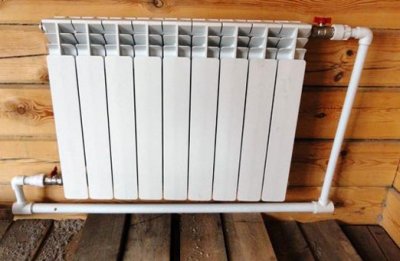
An autonomous heating system for a private home allows you to choose any heating radiators.
However, it is important to take them into account characteristics and features of the layout of internal premisesto organize home heating in the most economical and efficient way.
What to consider when buying, and what devices are best to use for autonomous heating?
Choosing the best radiators for a private or country house
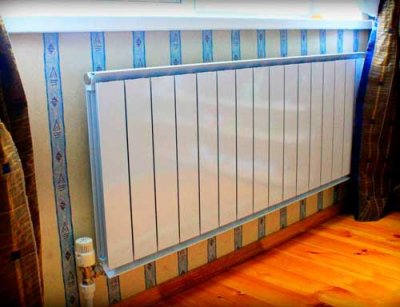
Heating of the private sector differs from the centralized one by the absence of water hammer and stable low pressure.
It also differs in closedness and lack of gas saturation. Therefore, the choice of radiators for your own home is not limited to the conditions of the general system, but depends on the preferences of the owners of the premises.
However, there is technical features, which must be taken into account when installing certain types of heating batteries. Namely:
- Durability and price of the heating device.
- External shape, presence of protruding edges and corners, safety and possibility of injury.
- Dimensions of the room and heat output characteristics of the heating device.
- Calculations of the required amount of heat and number of sections, area of the heating radiator.
Also, when choosing batteries, take into account their appearance and the possibility of installation in the system.
Types of heating radiators
There are several types of heating radiators: cast iron, aluminum, bimetallic and vacuum.
Cast iron for brick, stone, wooden buildings
Cast iron radiators - universal radiators for heating brick, stone, adobe and wooden houses. They are almost always installed in multi-storey buildings and are often used in the private sector due to their low price and the most impressive durability - 50-100 years. High service life is achieved due to slow corrosion and thick walls.
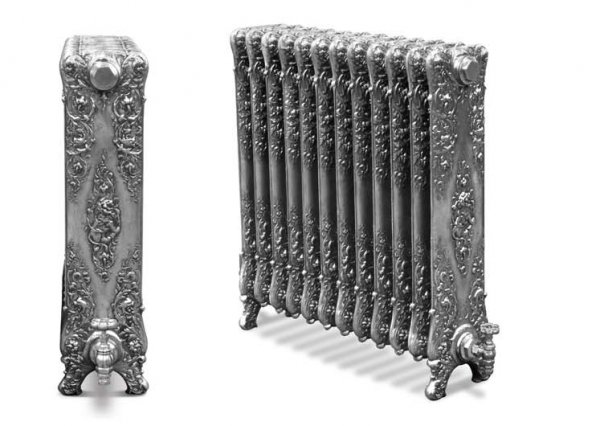
Photo 1. Cast iron heating radiator with decorative forging. It not only heats the house, but also decorates it.
Cast iron radiators have large internal cross-sections. Therefore, the flow of water in them is not complicated by mechanical impurities, rust, or sediment. Heat carrier does not require filtration and frequent air bleeding.
In relation to the private sector and modern heating trends, cast iron radiators have one drawback. They are characterized by high thermal inertia and take a long time to warm up, so they are difficult to use in temperature control systems.
What else to consider:
- Corrugated form with stiffening ribs that can cause childhood injuries. They can be prevented by installing a protective net or screen.
- Considerable weight and the load on the foundation, difficulties with transportation and demands on the quality of installation.
Conclusions: cast iron radiators are a traditional choice for water heating systems. They durable, reliable and inert. They are perfect for traditional brick houses, the heating of which operates in standard mode. They can be installed in systems from which the liquid is periodically drained, or in which there is an open expansion tank. When adjusting the temperature, it is necessary to take into account that the heating system with cast iron radiators must be "screwed" or the power must be added in advance.
Aluminum
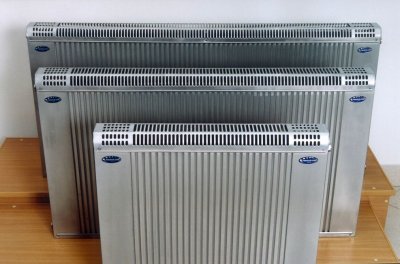
Modern batteries that differ from their cast iron predecessors weight and low thermal inertia.
They have an attractive appearance and a simple flat shape, which is why they rarely cause injuries.
But the main advantage is aluminum batteries have high heat transfer coefficient, which allows their surface to quickly heat the air.
Aluminum radiators are economical in all respects. Their weight less cast iron batteries 4 times (1-1.6 kg in one section aluminum vs. 5-7 kg in one section of cast iron). The internal cavity contains 2.5 l coolant (for comparison, in cast iron radiators one section contains up to 10 l). Warm-up time - 6 times faster than cast iron structures. The only lack of savings is in the price of aluminum ones. They cost 2-3 times more expensive.
Disadvantages of aluminum heaters:
- Service life — less than that of cast iron and is 15-20 years. The reduction in service life is due to aluminum corrosion and thin battery walls. The disadvantage can be combated by controlling the quality of the coolant, which is quite possible in autonomous heating systems of a private house. The heating system must be completely closed, and distilled liquid is poured inside.
- During the corrosion process, hydrogen is formed inside aluminum batteries. This causes air to form in gas locks. Which in turn initiates the appearance of cracks and leaks. This drawback is combated by installing bleed valves. They must operate automatically.
Conclusions: aluminum batteries can be installed in the heating system of a private residential building with a closed expansion tank, provided that the composition and quality of the coolant are controlled. It is necessary to install in the heating system pour in special liquid, install automatic bleeding devices. These batteries are ideal for temperature control.
Bimetallic
Bimetallic batteries are one of the latest expensive developments that have emerged as an alternative to rapidly corroding aluminum batteries. Bimetallic constructions soldered from two metals - steel core and aluminum case. This combination allows to improve corrosion resistance (steel is less susceptible to corrosion than aluminum) and maintain high heat output, thanks to the aluminum surface.
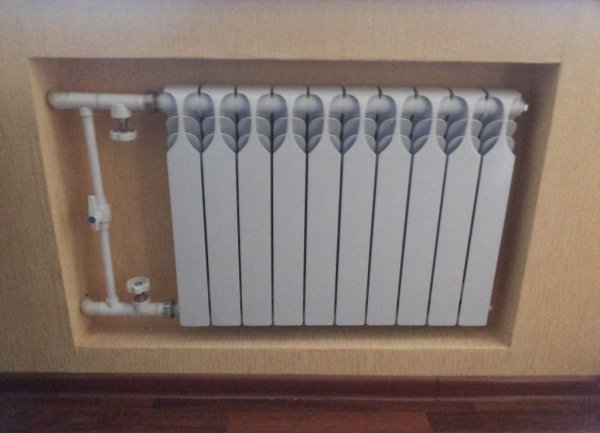
Photo 2. Bimetallic heating radiator installed on the wall. The device consists of several sections.
Bimetallic heaters - ideal for private houses with any walls. Due to their light weight, they are installed inside heavy brick buildings and hung on the walls of light frame houses. The only disadvantage bimetallic batteries is their high price.
Vacuum
The latest advertised model of heating batteries with reduced liquid pressure inside. It is positioned as a highly efficient design, which quickly gives off heat and efficiently heats the space. However, vacuum batteries are heating devices. with unproven effectivenessThey have a lot of negative reviews and a high selling price.
The design of a vacuum battery differs from cast iron and aluminum batteries. the presence of a sealed internal cavity, inside which ethanol (alcohol) vapors or lithium bromide saline solution vapors circulate. These substances are heat carriers, their circulation is limited by the radiator cavity, inside which the pressure is greatly reduced (evacuated to the vacuum level). The pressure reduction ensures the conversion of alcohol and lithium bromide into vapor.
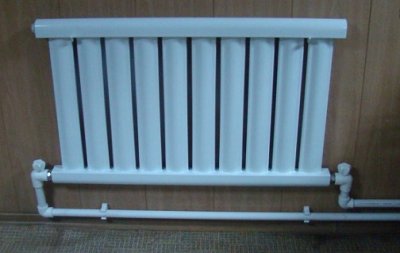
Through the internal cavity of the vacuum radiator there is a pipe through which a normal coolant moves - water.
The hot water heats up the pipe inside the radiator and transfers heat to the steam coolant. The steam settles on the cold surface of the outer walls of the radiator and gives them heat.
Thus, the circulation of liquid occurs with its constant evaporation and condensation. These processes ensure heat transfer.
Such complex explanations of the operation of a vacuum radiator do not always allow one to understand how its efficiency is increased. In fact, many customer reviews say that vacuum radiators consume less energy, but also heat the room worseTo achieve the same effect, instead of one aluminum section, two vacuum heating radiators must be installed.
Types of steel batteries
There are two types of steel radiators: tubular (sectional) and panel. They differ in design and price. There are also convector models with a built-in air blower. What to choose for heating your home?
Panel
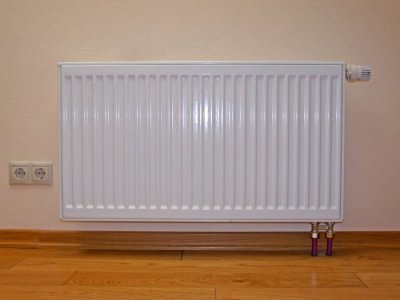
Panel radiators represent the cheapest designs of heating batteries.
They are enough effective, practical and safe, because all the tubes and protruding ribs in them are covered with a flat steel casing.
Their appearance resembles a flat box suspended from the wall under the windowsill and radiating heat.
Another advantage of steel radiators is their price. In combination with light weight, ease of installation, aesthetic design, the price makes panel structures popular among buyers and developers.
Attention! When choosing a steel panel radiator, it is important to remember its service life - 20-25 years old.
Tubular
Tubular structures differ from panel structures in price - they are more expensive. In terms of technical characteristics, the two designs are comparable. There is a slight difference in the operating pressure inside the batteries. Tubular radiators can withstand greater pressure than panel radiators. But for the private sector with an individual heating circuit, this factor is not important.
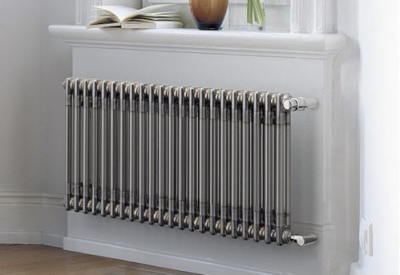
Tubular radiators also called sectional, since each pair of pipes is combined into one section.
The heating battery consists of several sections, the number of which determines the amount of heat that the radiator emits over a period of time.
Important for the private sector: if in multi-storey buildings an increase in the number of sections leads to better heating of the room, then in the private sector the situation is different. The heat radiated into the room depends little on the area of the radiator. It is determined by the heat coming from the heating furnace. When increasing the sections in a room of a private house, the amount of heat in the system remains the same. Therefore, the heating efficiency can be significantly improved only by upgrading the heating stove.
Convector
Convector radiators have built-in fan, which ensures movement of heated air. The name "convector" is related to the physical term "convection", which means mixing of air flows. In heating a private house, convector models are often used as portable batteries of the simplest connection.
For their operation it is enough to bring electricity into the house and arrange the wiring and sockets of suitable power. An electric convector installed in a room, ensures its rapid heating.
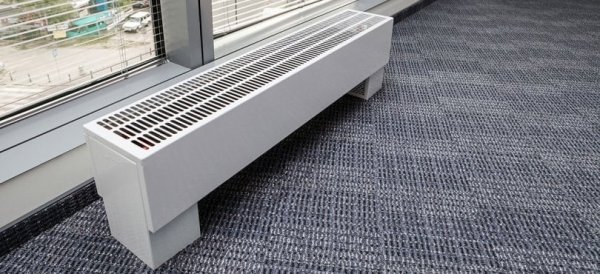
Photo 3. Floor convector heating radiator. There are openings in the upper part of the device through which warm air passes.
Convector radiators affordable in price and less affordable in payment for their work. For electric heating of the house it is necessary to qualitatively insulate its walls, ceiling and foundation. Then heating with heat convectors will be effective and affordable.
Useful video
Watch the video for tips on choosing a heating radiator.
Which batteries are best to install in a house and in a summer house
When choosing radiators for heating a private home, you need to be guided by features of your heating system And the ratio of the device's price, durability, and quality.
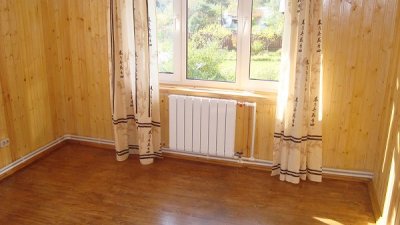
Cast iron radiators are suitable for any houses with different connection schemes, except for energy-saving structures with “smart” heating, which turns on an hour before the owners arrive.
Steel and aluminum — an alternative to cast iron batteries for energy-saving and frame buildings.
Bimetallic — the most expensive of those offered on the market, not counting vacuum ones. But they have a lot of advantages and therefore are prestigious. But the efficiency of the work vacuum batteries — is highly questionable; today, the vacuum design is a big experiment.









Comments